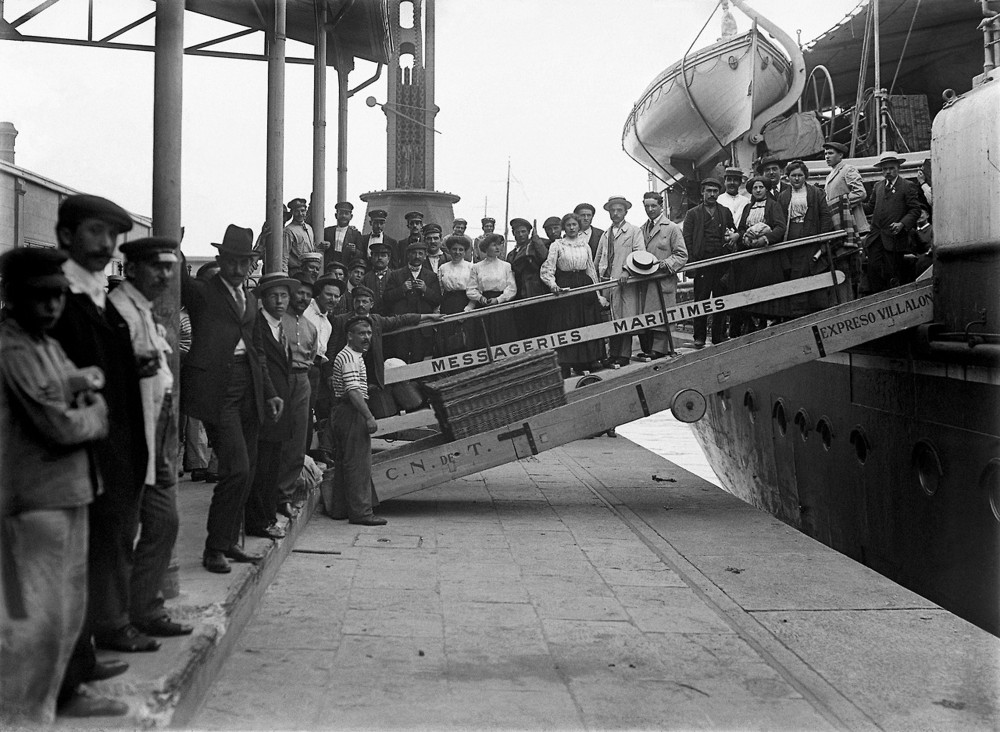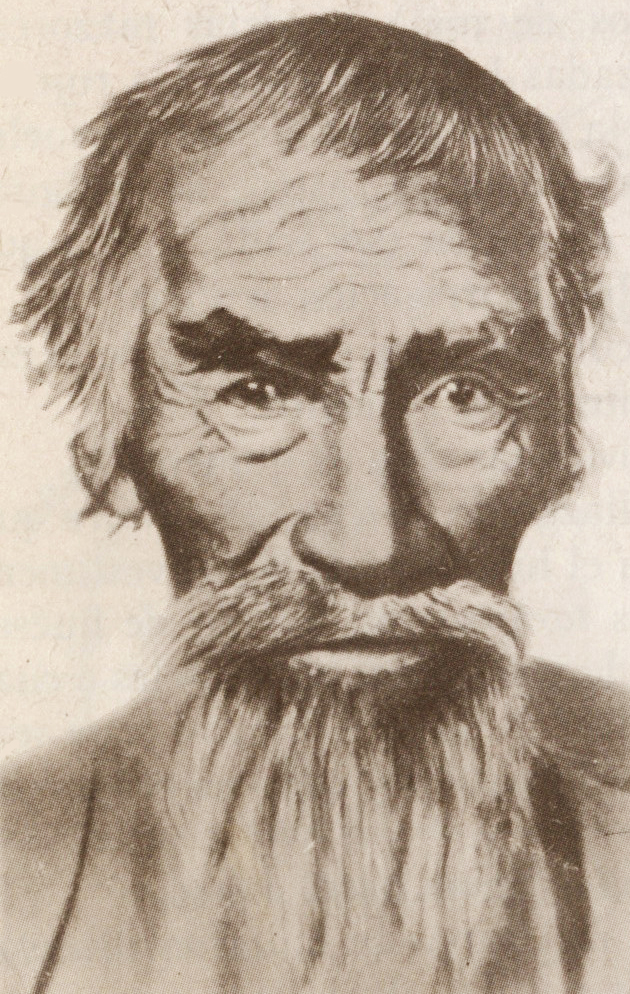|
Immigration To Argentina
The history of immigration to Argentina can be divided into several major stages: * Spanish colonization of the Americas, Spanish colonization between the :es:Siglo XVI, 16th and :es:Siglo XVIII, 18th century, mostly male, largely assimilated with the natives through a process called miscegenation. Although, not all of the current territory was effectively colonized by the Spaniards. The Chaco Province, Chaco region, Eastern Patagonia, the current province of La Pampa Province, La Pampa, the south zone of Córdoba, Argentina, Córdoba, and the major part of the current provinces of Buenos Aires, San Luis Province, San Luis, and Mendoza, Argentina, Mendoza were maintained under indigenous dominance—Guaycuru peoples, Guaycurúes and Wichís from the Chaco region; Huarpes in the Cuyana and north Neuquino; Ranqueles in the east of Cuyo and north from the Pampean region; Tehuelches and Mapuches in the Pampean and Patagonian regions, and Selknam and Yámanas in de Tierra del Fueg ... [...More Info...] [...Related Items...] OR: [Wikipedia] [Google] [Baidu] |
Huarpe
The Huarpes or Warpes are an Indigenous people of Argentina, living in the Cuyo region. Some scholars assume that in the Huarpe language, this word means "sandy ground," but according to ''Arte y Vocabulario de la lengua general del Reino de Chile'', written by Andrés Febrés in Lima in 1765, the word ''Cuyo'' comes from Araucanian ''cuyum puulli'', meaning "sandy land" or "desert country". History Huarpe people settled in permanent villages beginning in the 5th century CE. About 50 to 100 people lived in a village, making them smaller than Diaguita settlements. They were agrarian people who grew corn (''Zea mays''), beans, squash, and quinoa ('' Chenopodium quinoa'').Lewis 18 Towards the 15th century, Huarpe territory expanded into the current Argentinian provinces of San Luis, Mendoza and San Juan and even on the north of the Neuquen Province. They inhabited between the Jáchal River at north, to the Diamante River at south and between the Andes and Conlara Valle ... [...More Info...] [...Related Items...] OR: [Wikipedia] [Google] [Baidu] |
Italian Argentine
Italian Argentines (; , or ''tanos'' in Rioplatense Spanish) are Argentine-born citizens who are fully or partially of Italian descent, whose ancestors were Italians who emigrated to Argentina during the Italian diaspora, or Italian-born people in Argentina. Between the 1850s and the 1950s, 3.5 million Italians immigrated to Argentina. It was estimated that at least 25-30 million Argentines (62.5% of the country's population) have some degree of Italian ancestry. Argentina has the second-largest community of Italians outside of Italy, after Brazil. Contingents of Italian immigrants arrived in Argentina from all regions of Italy, mainly from Northern Italy in the 19th century and mostly from Southern Italy in the 20th century. Italian community in Argentina, along with Spanish immigrants, became a major part of modern Argentine society. Argentine culture has significant connections to Italian culture in terms of language, customs, and traditions. Argentina is also a strongly ... [...More Info...] [...Related Items...] OR: [Wikipedia] [Google] [Baidu] |
Great European Immigration Wave To Argentina
The Great European Immigration Wave to Argentina was the period of greatest immigration in Argentine history, which occurred approximately from the 1860s to the 1960s, when more than six million Europeans arrived in Argentina. The wave consisted largely of Italian Argentines, Italian and Spanish Argentines, Spanish immigrants, as well as major groups of French Argentines, French, ethnic German Argentines, Germans, Arab Argentines, Arabs, Basque Argentines, Basques, Polish Argentines, Poles, Ukrainian Argentines, Ukrainians and History of the Jews in Argentina, Jews. To a lesser extent, other communities included Yugoslavians, Russian Argentines, Russians, Armenian Argentines, Armenians, Argentina–Turkey relations, Turks, Hungarian Argentines, Hungarians, Y Wladfa, Welsh, English Argentines, English, Czechoslovakia, Czechoslovakians, Swiss Argentines, Swiss, Portuguese Argentines, Portuguese and various others. By 1895, foreigners had outnumbered natives in the city of Bue ... [...More Info...] [...Related Items...] OR: [Wikipedia] [Google] [Baidu] |
Alberdian
Juan Bautista Alberdi (August 29, 1810 – June 19, 1884) was an Argentine political theorist and diplomat. Although he lived most of his life in exile in Montevideo, Uruguay and in Chile, he influenced the content of the Constitution of Argentina of 1853. Based on his classical liberal and federal constitutional ideas, Alberdi at the same time tried to satisfy contrary social interests and establish a balance between national political centralization and provincial administrative decentralization: considering that both solutions would contribute to the consolidation and development of the original being of the single nation. Biography Early life Juan Bautista Alberdi was born in San Miguel de Tucumán, capital city of the Tucumán Province, Argentina, on August 29, 1810. His father, Salvador Alberdi, was a Spanish Basque merchant; his mother, Josefa Aráoz y Balderrama, had been born into an Argentine family of Spanish descent. She died as a result of Juan Bautista's birth. ... [...More Info...] [...Related Items...] OR: [Wikipedia] [Google] [Baidu] |
Eastern Europe
Eastern Europe is a subregion of the Europe, European continent. As a largely ambiguous term, it has a wide range of geopolitical, geographical, ethnic, cultural and socio-economic connotations. Its eastern boundary is marked by the Ural Mountains, and its western boundary is defined in various ways. Narrow definitions, in which Central Europe, Central and Southeast Europe are counted as separate regions, include Belarus, Russia and Ukraine. In contrast, broader definitions include Moldova and Romania, but also some or all of the Balkans, the Baltic states, the Caucasus, and the Visegrád Group, Visegrád group. The region represents a significant part of Culture of Europe, European culture; the main socio-cultural characteristics of Eastern Europe have historically largely been defined by the traditions of the Slavs, as well as by the influence of Eastern Christianity as it developed through the Byzantine Empire, Eastern Roman Empire and the Ottoman Empire. Another definition was ... [...More Info...] [...Related Items...] OR: [Wikipedia] [Google] [Baidu] |
Mediterranean Sea
The Mediterranean Sea ( ) is a sea connected to the Atlantic Ocean, surrounded by the Mediterranean basin and almost completely enclosed by land: on the east by the Levant in West Asia, on the north by Anatolia in West Asia and Southern Europe, on the south by North Africa, and on the west almost by the Morocco–Spain border. The Mediterranean Sea covers an area of about , representing 0.7% of the global ocean surface, but its connection to the Atlantic via the Strait of Gibraltar—the narrow strait that connects the Atlantic Ocean to the Mediterranean Sea and separates the Iberian Peninsula in Europe from Morocco in Africa—is only wide. Geological evidence indicates that around 5.9 million years ago, the Mediterranean was cut off from the Atlantic and was partly or completely desiccation, desiccated over a period of some 600,000 years during the Messinian salinity crisis before being refilled by the Zanclean flood about 5.3 million years ago. The sea was an important ... [...More Info...] [...Related Items...] OR: [Wikipedia] [Google] [Baidu] |
Spaniards
Spaniards, or Spanish people, are a Romance-speaking ethnic group native to the Iberian Peninsula, primarily associated with the modern nation-state of Spain. Genetically and ethnolinguistically, Spaniards belong to the broader Southern and Western European populations, exhibiting a high degree of continuity with other Indo-European-derived ethnic groups in the region. Spain is also home to a diverse array of national and regional identities, shaped by its complex history. These include various languages and dialects, many of which are direct descendants of Latin, the language imposed during Roman rule. Among them, Spanish (also known as Castilian) is the most widely spoken and the only official language across the entire country. Commonly spoken regional languages include, most notably, the sole surviving indigenous language of Iberia, Basque, as well as other Latin-descended Romance languages like Spanish itself, Catalan and Galician. Many populations outside Sp ... [...More Info...] [...Related Items...] OR: [Wikipedia] [Google] [Baidu] |
Italians
Italians (, ) are a European peoples, European ethnic group native to the Italian geographical region. Italians share a common Italian culture, culture, History of Italy, history, Cultural heritage, ancestry and Italian language, language. Their predecessors differ regionally, but generally include populations such as the Etruscan civilization, Etruscans, Rhaetians, Ligurians, Adriatic Veneti, Magna Graecia, Ancient Greeks and Italic peoples, including Latins (Italic tribe), Latins, from which Roman people, Romans emerged and helped create and evolve the modern Italian identity. Legally, Italian nationality law, Italian nationals are citizens of Italy, regardless of ancestry or nation of residence (in effect, however, Italian nationality law, Italian nationality is largely based on ''jus sanguinis'') and may be distinguished from ethnic Italians in general or from people of Italian descent without Italian citizenship and ethnic Italians living in territories adjacent to the I ... [...More Info...] [...Related Items...] OR: [Wikipedia] [Google] [Baidu] |
Jews
Jews (, , ), or the Jewish people, are an ethnoreligious group and nation, originating from the Israelites of History of ancient Israel and Judah, ancient Israel and Judah. They also traditionally adhere to Judaism. Jewish ethnicity, religion, and community are highly interrelated, as Judaism is their ethnic religion, though it is not practiced by all ethnic Jews. Despite this, religious Jews regard Gerim, converts to Judaism as members of the Jewish nation, pursuant to the Conversion to Judaism, long-standing conversion process. The Israelites emerged from the pre-existing Canaanite peoples to establish Kingdom of Israel (Samaria), Israel and Kingdom of Judah, Judah in the Southern Levant during the Iron Age.John Day (Old Testament scholar), John Day (2005), ''In Search of Pre-Exilic Israel'', Bloomsbury Publishing, pp. 47.5 [48] 'In this sense, the emergence of ancient Israel is viewed not as the cause of the demise of Canaanite culture but as its upshot'. Originally, J ... [...More Info...] [...Related Items...] OR: [Wikipedia] [Google] [Baidu] |
Arabs
Arabs (, , ; , , ) are an ethnic group mainly inhabiting the Arab world in West Asia and North Africa. A significant Arab diaspora is present in various parts of the world. Arabs have been in the Fertile Crescent for thousands of years. In the 9th century BCE, the Assyrians made written references to Arabs as inhabitants of the Levant, Mesopotamia, and Arabia. Throughout the Ancient Near East, Arabs established influential civilizations starting from 3000 BCE onwards, such as Dilmun, Gerrha, and Magan, playing a vital role in trade between Mesopotamia, and the Mediterranean. Other prominent tribes include Midian, ʿĀd, and Thamud mentioned in the Bible and Quran. Later, in 900 BCE, the Qedarites enjoyed close relations with the nearby Canaanite and Aramaean states, and their territory extended from Lower Egypt to the Southern Levant. From 1200 BCE to 110 BCE, powerful kingdoms emerged such as Saba, Lihyan, Minaean, Qataban, Hadhramaut, Awsan, and ... [...More Info...] [...Related Items...] OR: [Wikipedia] [Google] [Baidu] |
Western Asia
West Asia (also called Western Asia or Southwest Asia) is the westernmost region of Asia. As defined by most academics, UN bodies and other institutions, the subregion consists of Anatolia, the Arabian Peninsula, Iran, Mesopotamia, the Armenian highlands, the Levant, the island of Cyprus, the Sinai Peninsula and the South Caucasus. The region is separated from Africa by the Isthmus of Suez in Egypt, and separated from Europe by the waterways of the Turkish Straits and the watershed of the Greater Caucasus. Central Asia lies to its northeast, while South Asia lies to its east. Twelve seas surround the region (clockwise): the Aegean Sea, the Sea of Marmara, the Black Sea, the Caspian Sea, the Persian Gulf, the Gulf of Oman, the Arabian Sea, the Gulf of Aden, the Red Sea, the Gulf of Aqaba, the Gulf of Suez, and the Mediterranean Sea. West Asia contains the majority of the similarly defined Middle East. The ''Middle East'' is a political term invented by Western geographers that has ... [...More Info...] [...Related Items...] OR: [Wikipedia] [Google] [Baidu] |









